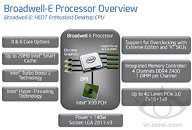In what is a confirmation that AMD has killed socket AM3+ and its 3-chip platform, a leaked slide that's part of a larger press-deck addressing investors, tells us that the company is planning to launch a high-performance desktop processor targeting enthusiasts, based on its next-generation "Zen" architecture, in 2016. Our older articles detail the
Zen CPU core design, and the way in which AMD will build
multi-core CPUs with it. This processor will be codenamed "Summit Ridge," and will be a CPU, and not an APU as
previously reported. In AMD-speak, what sets a CPU apart from an APU is its lack of integrated graphics.
AMD "Summit Ridge" will be an 8-core CPU built on the 14 nanometer silicon fab process. It will feature eight "Zen" cores, with 512 KB of L2 cache per core, 16 MB of L3 cache, with 8 MB shared between two sets of four cores, each; a dual-channel integrated memory controller that likely supports both DDR3 and DDR4 memory types; and an integrated PCI-Express gen 3.0 root complex, with a total of 22 lanes. We can deduce this from the fact that "Summit Ridge" will be built in the same upcoming socket FM3 package, which the company's "Bristol Ridge" Zen-based APU will be built on. "Summit Ridge" will hence be more competitive with Intel's 6th generation Core "Skylake" processors, such as the i7-6700K and i5-6600K, than the company's "Broadwell-E" HEDT platform.






